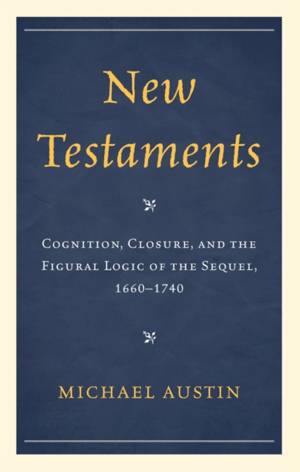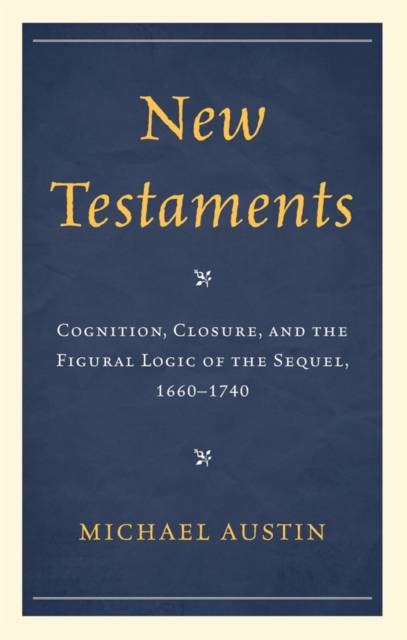
- Afhalen na 1 uur in een winkel met voorraad
- Gratis thuislevering in België vanaf € 30
- Ruim aanbod met 7 miljoen producten
- Afhalen na 1 uur in een winkel met voorraad
- Gratis thuislevering in België vanaf € 30
- Ruim aanbod met 7 miljoen producten
Zoeken
New Testaments
Cognition, Closure, and the Figural Logic of the Sequel, 1660-1740
Michael Austin
Hardcover | Engels
€ 160,45
+ 320 punten
Omschrijving
New Testaments examines sequelization in the seventeenth and eighteenth centuries from two perspectives: 1) the cognitive perspective, which explores the cognitive and evolutionary foundations of the contradictory desires to produce, and to resist, narrative closure; and 2) the biblical perspective, which explains that the connections between sequels and their original works were often constructed with the same tools that the culture used to forge the Old and New Testaments into a single, coherent narrative.
Specificaties
Betrokkenen
- Auteur(s):
- Uitgeverij:
Inhoud
- Aantal bladzijden:
- 180
- Taal:
- Engels
Eigenschappen
- Productcode (EAN):
- 9781611493641
- Verschijningsdatum:
- 17/11/2011
- Uitvoering:
- Hardcover
- Formaat:
- Ongenaaid / garenloos gebonden
- Afmetingen:
- 155 mm x 231 mm
- Gewicht:
- 399 g

Alleen bij Standaard Boekhandel
+ 320 punten op je klantenkaart van Standaard Boekhandel
Beoordelingen
We publiceren alleen reviews die voldoen aan de voorwaarden voor reviews. Bekijk onze voorwaarden voor reviews.








